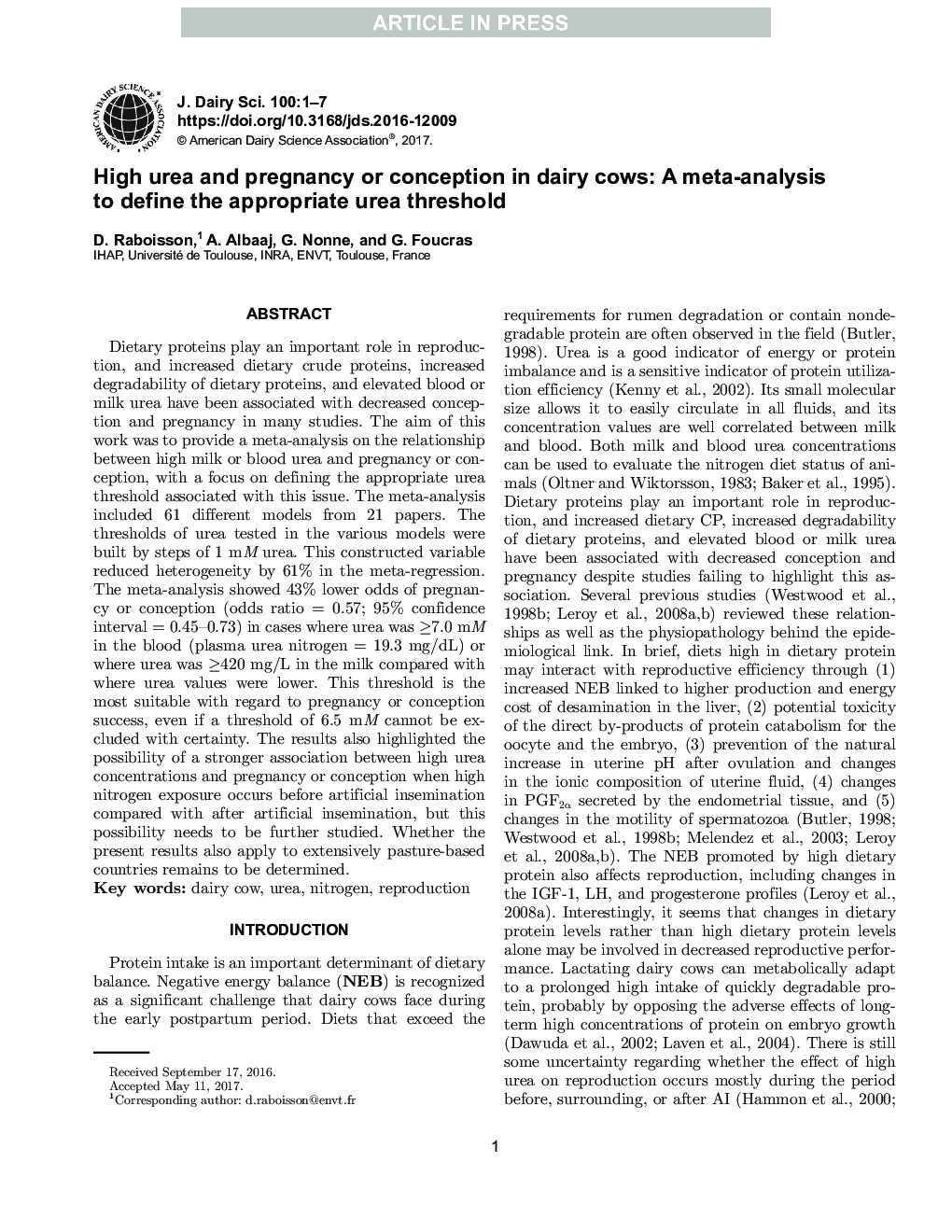| Article ID | Journal | Published Year | Pages | File Type |
|---|---|---|---|---|
| 5542115 | Journal of Dairy Science | 2017 | 7 Pages |
Abstract
Dietary proteins play an important role in reproduction, and increased dietary crude proteins, increased degradability of dietary proteins, and elevated blood or milk urea have been associated with decreased conception and pregnancy in many studies. The aim of this work was to provide a meta-analysis on the relationship between high milk or blood urea and pregnancy or conception, with a focus on defining the appropriate urea threshold associated with this issue. The meta-analysis included 61 different models from 21 papers. The thresholds of urea tested in the various models were built by steps of 1 mM urea. This constructed variable reduced heterogeneity by 61% in the meta-regression. The meta-analysis showed 43% lower odds of pregnancy or conception (odds ratio = 0.57; 95% confidence interval = 0.45-0.73) in cases where urea was â¥7.0 mM in the blood (plasma urea nitrogen = 19.3 mg/dL) or where urea was â¥420 mg/L in the milk compared with where urea values were lower. This threshold is the most suitable with regard to pregnancy or conception success, even if a threshold of 6.5 mM cannot be excluded with certainty. The results also highlighted the possibility of a stronger association between high urea concentrations and pregnancy or conception when high nitrogen exposure occurs before artificial insemination compared with after artificial insemination, but this possibility needs to be further studied. Whether the present results also apply to extensively pasture-based countries remains to be determined.
Keywords
Related Topics
Life Sciences
Agricultural and Biological Sciences
Animal Science and Zoology
Authors
D. Raboisson, A. Albaaj, G. Nonne, G. Foucras,
